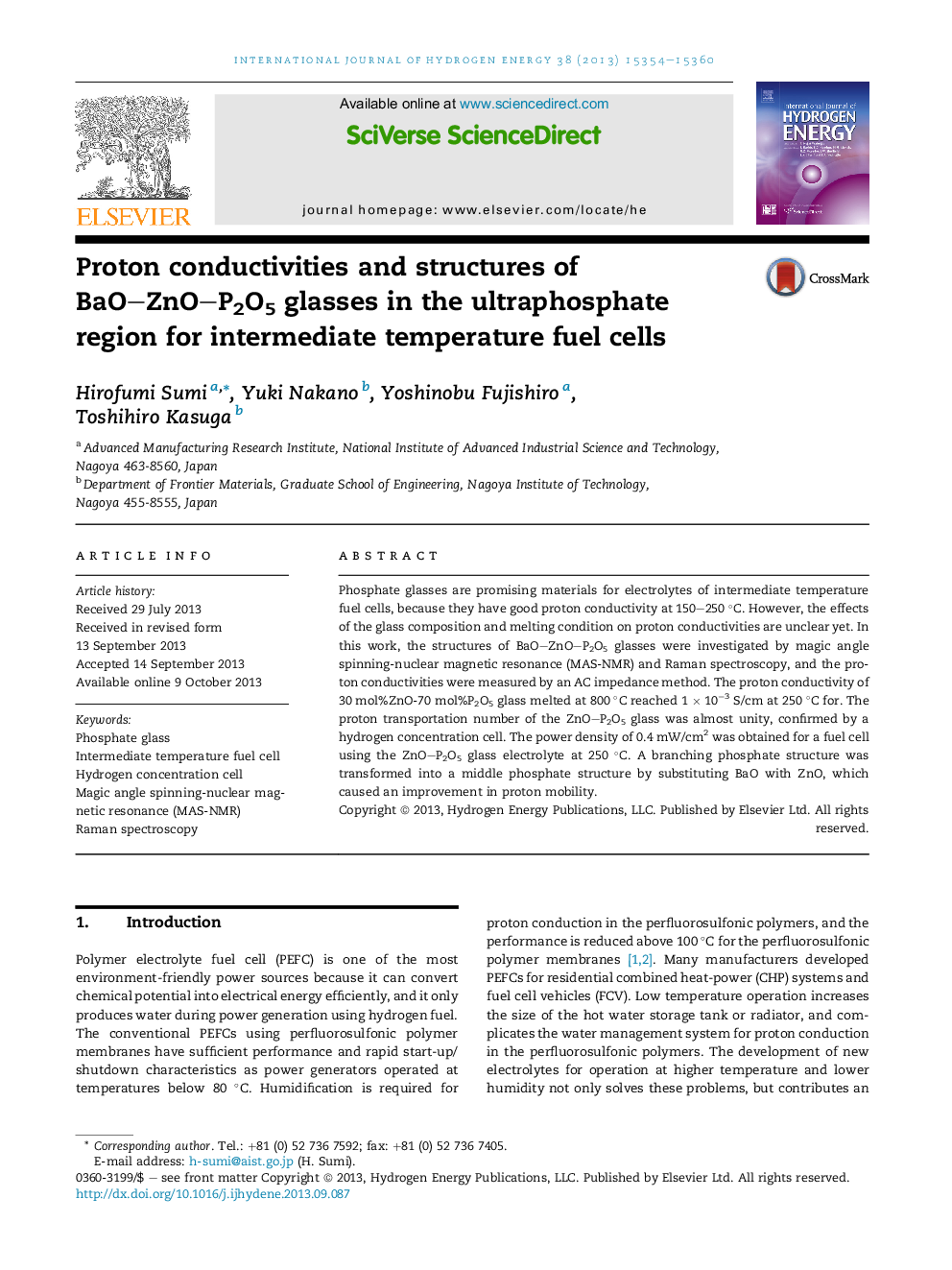| Article ID | Journal | Published Year | Pages | File Type |
|---|---|---|---|---|
| 7721203 | International Journal of Hydrogen Energy | 2013 | 7 Pages |
Abstract
Phosphate glasses are promising materials for electrolytes of intermediate temperature fuel cells, because they have good proton conductivity at 150-250 °C. However, the effects of the glass composition and melting condition on proton conductivities are unclear yet. In this work, the structures of BaO-ZnO-P2O5 glasses were investigated by magic angle spinning-nuclear magnetic resonance (MAS-NMR) and Raman spectroscopy, and the proton conductivities were measured by an AC impedance method. The proton conductivity of 30 mol%ZnO-70 mol%P2O5 glass melted at 800 °C reached 1 Ã 10â3 S/cm at 250 °C for. The proton transportation number of the ZnO-P2O5 glass was almost unity, confirmed by a hydrogen concentration cell. The power density of 0.4 mW/cm2 was obtained for a fuel cell using the ZnO-P2O5 glass electrolyte at 250 °C. A branching phosphate structure was transformed into a middle phosphate structure by substituting BaO with ZnO, which caused an improvement in proton mobility.
Keywords
Related Topics
Physical Sciences and Engineering
Chemistry
Electrochemistry
Authors
Hirofumi Sumi, Yuki Nakano, Yoshinobu Fujishiro, Toshihiro Kasuga,
